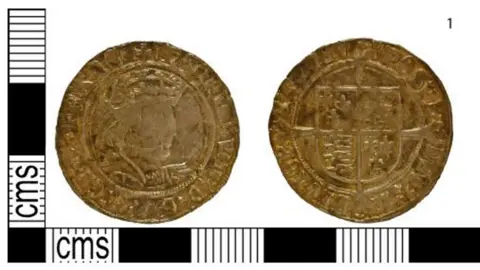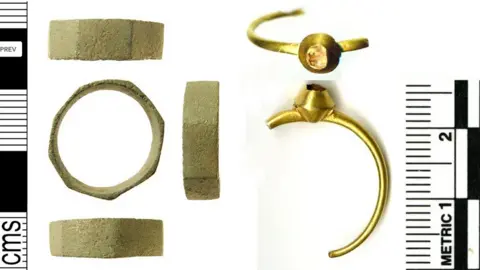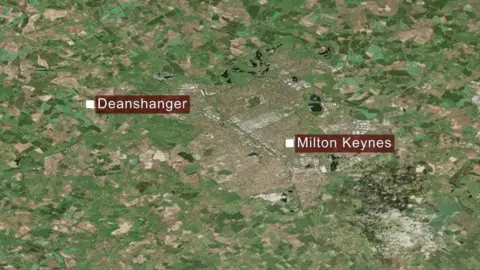Deanshanger: Treasure finds confirm village's 'popular' status
 Portable Antiquities Scheme
Portable Antiquities SchemeA growing number of treasure finds around a village confirms its important position as part of a "popular transport route", an expert said.
Two Henry VIII silver groats were found by a metal detectorist near Deanshanger in Northamptonshire, close to the 2,000-year-old Watling Street route.
Other finds declared treasure from near the village in recent years include medieval and Roman coins and jewellery.
Finds liaison officer Ellie Cox said it was a well-used stop-off point.
 Getty Images
Getty ImagesThe groats - a silver coin worth four old pence which was declared treasure earlier this month - date to the earlier period of Henry VIII's reign.
Ms Cox said they show him "when he was still a young, dashing sportsman" with shoulder-length hair.
As they are "fine examples" with little wear, she believes they must have fallen out of someone's purse quite soon after they were minted in about 1526 and 1532.
 Portable Antiquities Scheme
Portable Antiquities SchemeThe village is close to Watling Street - now the A5 - which has been an important north/south route through England since it was built by the Romans.
Ms Cox said it was "a popular transport route which offered access to people travelling for economic, religious or military reasons".
She added the growing number of finds appear to suggest Deanshanger was a "popular place to stop and eat and even possibly to trade".
They have been made by a number of individual detectorists over more than a decade, who are "absolutely fantastic at reporting everything to me", said Ms Cox.

The finds include coins ranging from the Roman to the Stuart eras, Roman and medieval rings, trading tokens and a small medieval bell.
Towcester Museum is hoping to add the latest coins to its collection.
Anyone who finds gold or silver artefacts thought to be more than 300 years old must report them under the 1996 Treasure Act.
